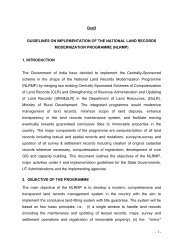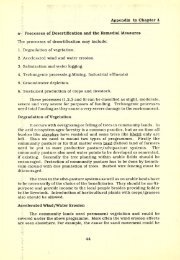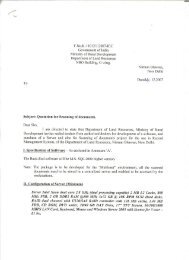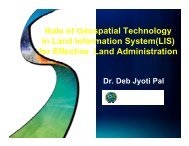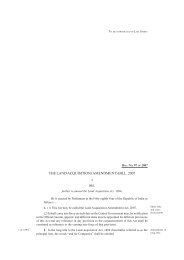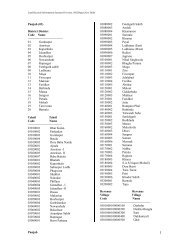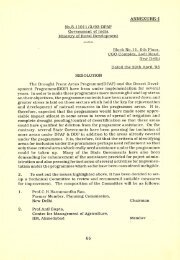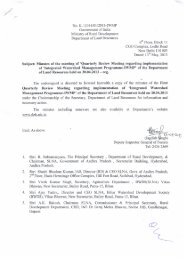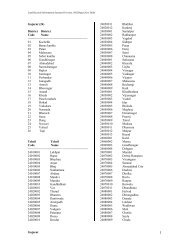Uttarakhand - Department of Land Resources
Uttarakhand - Department of Land Resources
Uttarakhand - Department of Land Resources
Create successful ePaper yourself
Turn your PDF publications into a flip-book with our unique Google optimized e-Paper software.
The fact is that the fodder crisis is part <strong>of</strong> the larger land and water crisis <strong>of</strong> rural<br />
India. Better agricultural productivity on private lands is a sure-shot source <strong>of</strong><br />
additional fodder. But this productivity is limited by the non-availability <strong>of</strong> water to<br />
irrigate crops. That is why the villagers need to take their animals to graze in<br />
forestlands. Part <strong>of</strong> the problem is there is no water to grow crops, and so, no<br />
agricultural residues for animals to eat. Water then becomes the first enabling tool. It<br />
is, therefore, imperative that we link fodder security to water security - building water<br />
recharge structures for irrigation.<br />
The third concern relates to the largest grazing lands-the common lands-degraded<br />
through sheer pressure. It is understood these lands ought to be regenerated. But<br />
what needs to be further understood is that such regeneration is not possible without<br />
factoring in the animal economy. Building boundary walls to keep grazing animals<br />
out will not succeed; the pressure is too great. Planting <strong>of</strong> fodder yielding species is<br />
required in the common lands to meet the fodder demand. Thus, here the fodder<br />
security for livestock is linked with forest security - replanting and regenerating our<br />
vast common lands.<br />
CHALLENGES FOR ENVIRONMENTAL SECURITY<br />
„Climate change refers to a statistically significant variation in either the mean state<br />
<strong>of</strong> the climate or in its variability, persisting for an extended period <strong>of</strong> decades or<br />
longer (IPCC, 2001). The United Nations Framework Convention on Climate Change<br />
(UNFCCC), in its Article 1, defines climate change as “a change <strong>of</strong> climate which is<br />
attributed directly or indirectly to human activity that alters the composition <strong>of</strong> the<br />
global atmosphere and which is in addition to natural climate variability observed<br />
over comparable time periods”.<br />
As per Chapter 13 Mountains: Fragile Ecosystems in Peril <strong>of</strong> Agenda 21 highlights,<br />
“mountains are important sources <strong>of</strong> water, energy, minerals, forest and agricultural<br />
products and areas <strong>of</strong> recreation. They are storehouses <strong>of</strong> biological diversity, home<br />
to endangered species and an essential part <strong>of</strong> the ecosystem”. Mountain<br />
ecosystems having unique climatic and biophysical conditions house rare species <strong>of</strong><br />
flora and fauna as compared to those habiting lowland areas with widespread<br />
105





